NIL
Field of 64 Projections: Two new hosts spark changes through NCAA Tournament entering final week
We have reached the final week of college baseball’s regular season. There’s still a lot left to play for over the next week and then into conference tournament, but it’s time for this week’s Field of 64 projections. Things still feel relatively wide open in the NCAA Tournament from the hosting line down through the […]
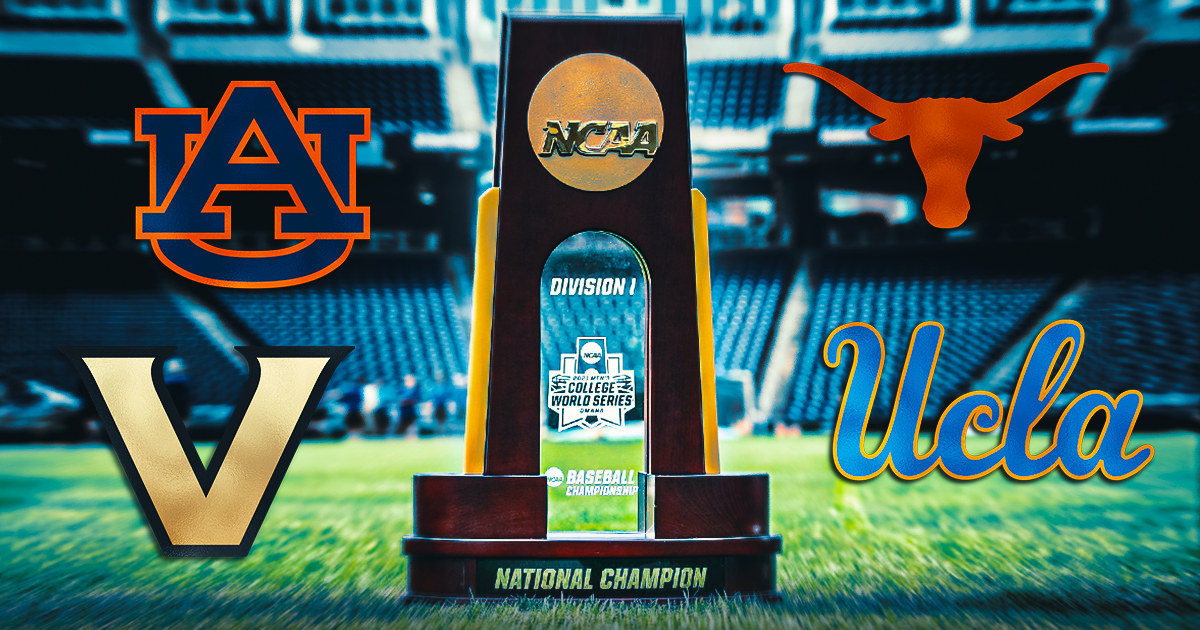
We have reached the final week of college baseball’s regular season. There’s still a lot left to play for over the next week and then into conference tournament, but it’s time for this week’s Field of 64 projections.
Things still feel relatively wide open in the NCAA Tournament from the hosting line down through the bubble. Hosting wise, the top 16 seeds are made up of eight SEC teams, followed by the ACC (3), Big Ten (2), Sun Belt (1), Big West (1) and Independent (1). Six of those eight SEC teams are top eight overall seeds.
Overall, the SEC again leads the way with 13 total bids to the Field of 64. The ACC follows with nine, while the Big 12 has seven. Other leagues with multiple bids are the Big Ten (5), Sun Belt (3), Big West (2) and Conference USA (2).
Some conference tournaments will get underway this week, but for the most part, leagues will have their final regular season weekend before tournaments begin next Tuesday. The NCAA Tournament selection show is Monday, May 26.
*denotes automatic qualifier for conference champions
Field of 64 Projections: Bubble Watch
Last Four In: Iowa, Cincinnati, Cal Poly, Michigan
First Four Out: UTRGV, Xavier, Virginia, Notre Dame
Next Four Out: UC Santa Barbara, Oklahoma State, Virginia Tech, Creighton
Iowa is one of the most confusing teams to grade in this year’s field. The Hawkeyes currently sit atop the Big Ten with a 21-6 league record, but are just 3-2-1 in Q1 games and sit at No. 67 in RPI. If they hold on to win the Big Ten regular season, they’ll be fine. But if they don’t, they might be in danger.
Virginia and Notre Dame are still among the teams fighting to get on the right side of the bubble. They, along with UC Santa Barbara and Oklahoma State, are among quite a few teams who are trending upwards as the regular season neards its end.
Austin Regional
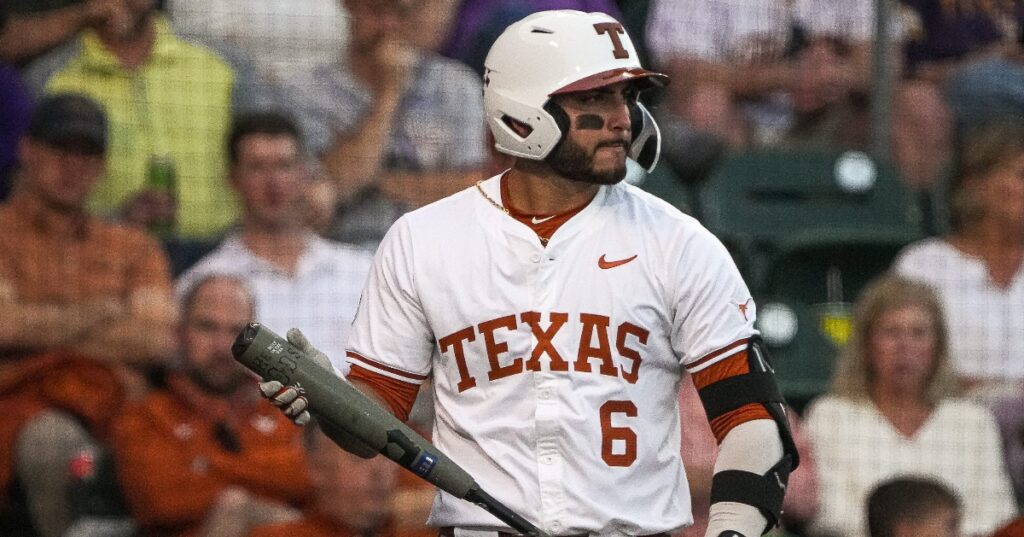
1. Texas (1)*
2. Troy
3. Western Kentucky
4. Central Connecticut State*
Despite back-to-back series losses, Texas remains the top overall seed in this week’s Field of 64. The Longhorns still sit alone atop the SEC’s standings, are 40-10 overall, 20-7 in conference play and No. 4 in RPI. With a 15-9 Q1 record, Texas still has the strongest overall resume in the country, though they’ll need to finish strong to solidify their spot at the top.
Irvine Regional
1. UC Irvine (16)*
2. Louisville
3. USC
4. San Diego*
UC Irvine remains right on the fringe of the hosting bubble, and gets the nod again as the No. 16 overall seed this week. The Anteaters are 38-11, 23-4 in the Big West and No. 18 in RPI, with a 9-4 Q1 record. What happens over the final week will be extremely important for UC Irvine, especially if their RPI drops any with a home series with Cal State Fullerton (RPI 134) on deck.
Auburn Regional
1. Auburn (2)
2. Miami
3. Michigan
4. Oral Roberts*
Auburn keeps rising just about every week it seems like, and now they’re all the way up to the No. 2 overall seed. The Tigers are 36-15 overall, 16-11 in the SEC and No. 2 in RPI, with a 14-10 Q1 record and the top overall strength of schedule. Auburn isn’t out of the running for the top overall seed, but they feel locked into a top eight seed right now.
Knoxville Regional
1. Tennessee (15)
2. Dallas Baptist*
3. Kansas
4. Tennessee Tech*
Tennessee is in serious danger of falling out of the hosting race, though they hold on in this week’s Field of 64. The Vols are 39-13 overall, 15-12 in the SEC and No. 15 in RPI with a 10-8 Q1 record, but have now lost four series in a row and five of their last six, and if they can’t take their final series against Arkansas, will a team that’s lost six of their last seven series get the nod? If they don’t Dallas Baptist is right on the cusp, and actually dropped out of the top 16 in this week’s projections.
Tallahassee Regional
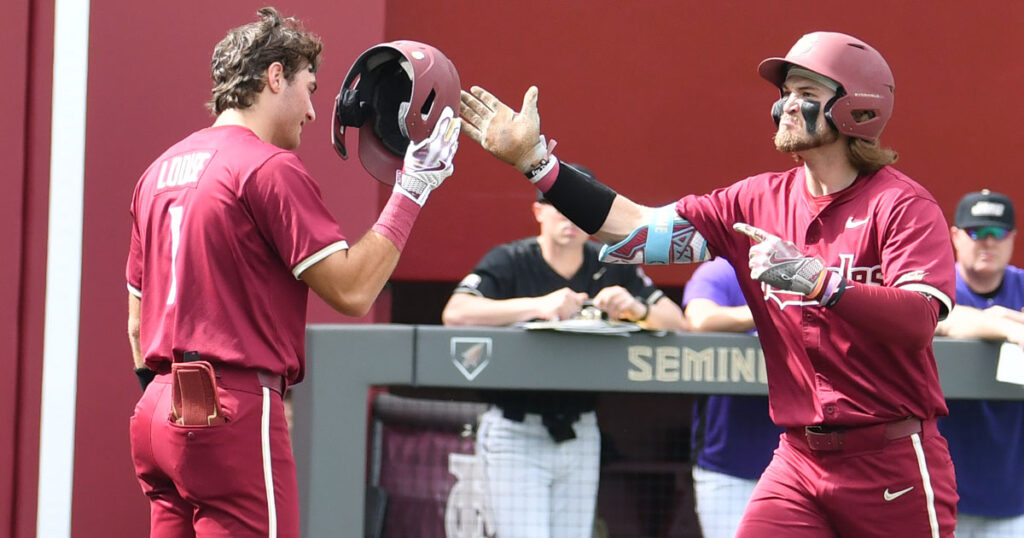
1. Florida State (3)*
2. Southern Miss
3. Iowa
4. Bethune-Cookman*
Florida State continues to sit atop the ACC entering the final week of the regular season, and that would have the Seminoles hosting as a top eight. They’re currently 36-11 overall, 16-8 in the ACC and No. 9 in RPI with an 11-7 Q1 record. The RPI can’t drop too much lower to host as a top three seed, but for now, the Seminoles are in good shape for the top eight and are a lock to host.
Clemson Regional
1. Clemson (14)
2. Ole Miss
3. Northeastern*
4. High Point*
Clemson is another team that is trending dangerously close to the hosting bubble right now. The Tigers have dropped three straight series, now 38-15 overall, 15-12 in the ACC and No. 14 in RPI, with a 6-10 Q1 record. Clemson can’t afford to lose their final series of the year at Pitt, and a strong showing in the conference tournament would be big to solidify themselves as a host.
Nashville Regional
1. Vanderbilt (4)
2. UTSA*
3. Kansas State
4. Bryant*
Vanderbilt is again on the rise, now a top four overall seed in this week’s Field of 64. The Commodores are 36-16 overall, 16-11 in the SEC and No. 3 in RPI, with a 15-14 Q1 record. They are one of two teams currently with 15 Q1 wins. UTSA still feels like they could factor into the hosting discussion too, as they dominated the AAC regular season and are No. 21 in RPI.
Eugene Regional
1. Oregon (13)
2. Oklahoma
3. Cal Poly
4. Murray State*
Oregon has been right on the bubble of the hosting picture for a few weeks, and now they’re on the right side of the top 16. The Ducks are 38-13 overall with a 19-8 Big Ten record, currently No. 19 in RPI with a 9-1 Q1 record. They’ll carry a seven-game winning streak to Iowa this weekend, a series that would solidify Oregon as a host if they win.
Athens Regional
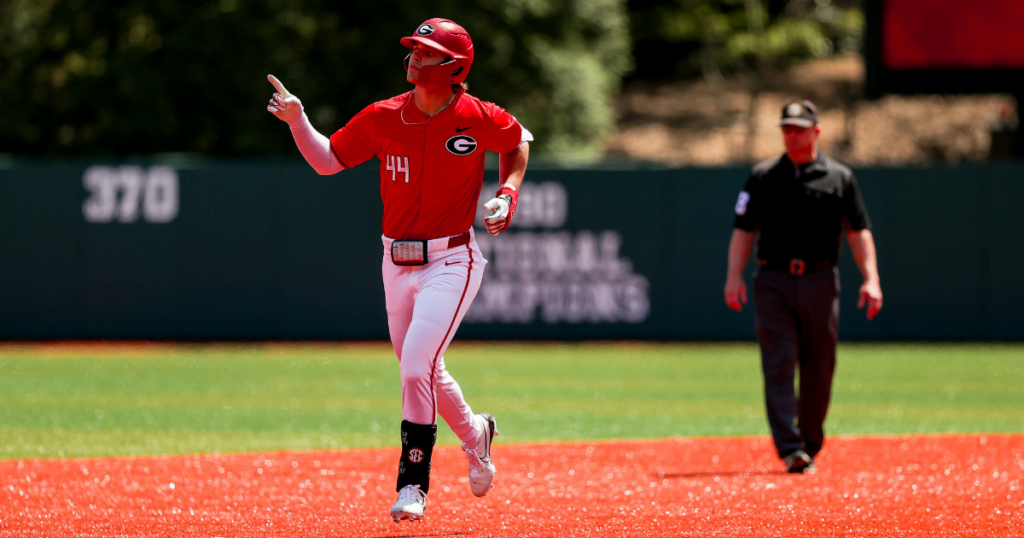
1. Georgia (5)
2. Duke
3. Cincinnati
4. Holy Cross*
Georgia lost their most recent series to Alabama, and drop a couple spots down to our No. 5 overall seed this week. Still, the Bulldogs are 40-13 overall, 16-11 in the SEC and No. 1 in RPI, with an 11-10 Q1 record. They are locked into a top eight seed with RPI sitting so highly, and with a strong final weekend, could slide back up to the top overall seeds in the tournament.
Conway Regional
1. Coastal Carolina (12)*
2. Florida
3. UConn*
4. Fairfield*
Coastal Carolina’s great season keeps rolling, as the Chanticleers are 41-11 overall, 23-4 in the Sun Belt and No. 12 in RPI. Their 4-5 Q1 record could limit their ceiling in terms of seeding, but they do currently boast the No. 4 non-conference RPI and No. 14 non-conference strength of schedule. One spot below them in RPI at No. 13 is Florida, who likely aren’t in a position to host, though a sweep against Alabama to end the year could change that.
Baton Rouge Regional
1. LSU (6)
2. Georgia Tech
3. Southeastern Louisiana*
4. Columbia*
LSU feels pretty safe as a top eight seed as of right now. The Tigers are 40-12 overall, 17-10 in SEC play and No. 7 in RPI, with a 13-10 Q1 record to give their resume a strong boost. They finish the season at South Carolina, so it’d be surprising to see LSU finish outside of the top eight, and they’re another contender for a top three overall seed.
Tuscaloosa Regional
1. Alabama (11)
2. West Virginia*
3. East Tennessee State*
4. Austin Peay*
Alabama’s series win over Georgia was massive for their hosting chances, and they slide into the top 16 as our No. 11 seed in this week’s Field of 64. The Crimson Tide are 39-13 overall, 15-12 in the SEC and No. 8 in RPI, with a 12-9 Q1 record. If they earn a series win over Florida to end the regular season, top eight becomes a strong possibility, and they’re already in the discussion. West Virginia is still in the mix to host, but their RPI is trending the wrong way. They’re the first or second team off of the top 16 currently.
Corvallis Regional

1. Oregon State (7)
2. TCU
3. Kentucky
4. Nevada*
Oregon State has turned in quite the season playing an independent schedule, and they’re in line to host as a top eight, or close to one, right now. The Beavers are 37-12-1 on the year thanks to a tie in Sunday’s finale against Iowa, and are currently No. 6 in RPI. A 5-8 Q1 record could limit them, but right around the middle of the top 16 feels right for them. TCU is still in position to sneak into the hosting mix, depending on what they do the rest of the way.
Chapel Hill Regional
1. North Carolina (10)
2. Arizona
3. Mississippi State
4. Kent State*
North Carolina and NC State didn’t play their finale on Sunday due to weather, and that could end up being a tough break for UNC’s top eight hopes. In this week’s Field of 64, they’re the No. 10 overall seed at 37-11 overall,16-10 in ACC play and No. 11 in RPI. The Tar Heels are 7-5 in Q1 games, and could will likely slide into the top eight if they win their final series at Florida State.
Fayetteville Regional
1. Arkansas (8)
2. Wake Forest
3. Rhode Island*
4. Wright State*
Arkansas is a curious case right now. They’ve lost four of their last five series, but the series win was two weeks ago when they swept then top-ranked Texas. The Razorbacks are now 41-11 overall, 18-9 in SEC play and No. 5 in RPI with a 12-8 Q1 record, a resume that’s worthy of top eight consideration. But if they can’t win the series against Tennessee to end the regular season, they could fall out of the top eight, though hosting isn’t in danger.
Los Angeles Regional
1. UCLA (9)*
2. NC State
3. Arizona State
4. Sacramento State*
UCLA can take control of the Big Ten in the regular season’s final week, and they’re up to No. 9 overall in this week’s Field of 64. The Bruins are 37-14 overall, 20-7 in Big Ten play and No. 10 in RPI. Their 3-7 Q1 record is an argument against them, but if UCLA does win the Big Ten, they’ll be impossible to deny as a host and would have a case for the top eight.
NIL
Kentucky’s unique depth could set a playing time record
Kentucky has 14 legit ballers on the team this season. This type of depth is unlike anything college basketball has ever seen. The last time the Wildcats basked in a talent pool this deep was the platoon year of 2014-15. That was a pretty good squad, to say the least, but even that team only […]
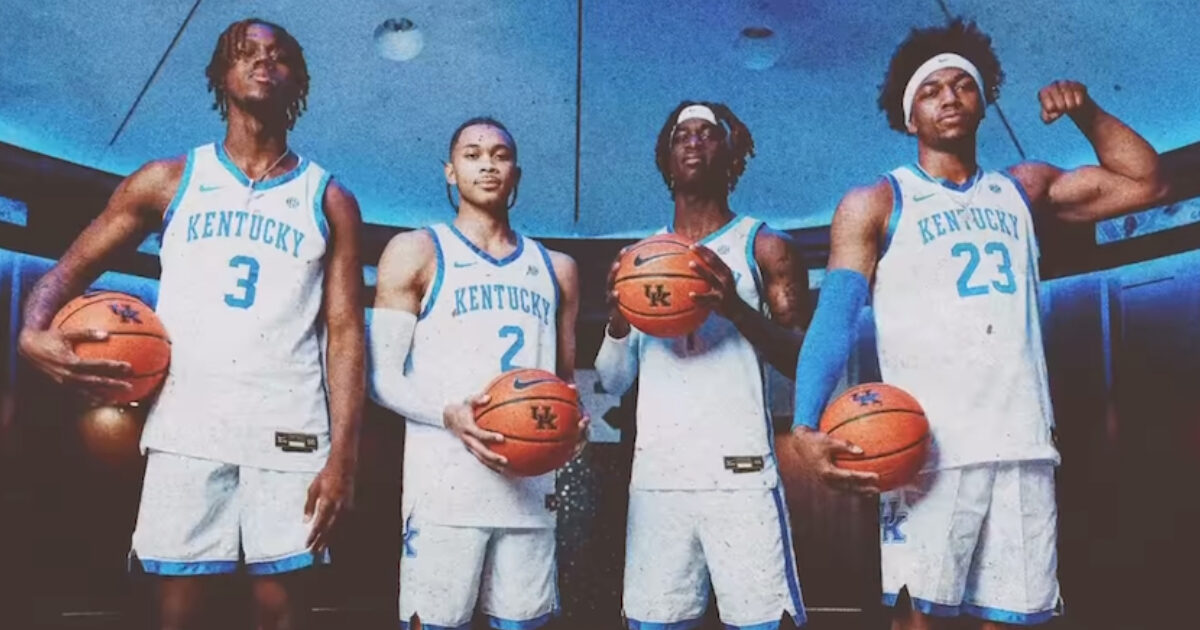
Kentucky has 14 legit ballers on the team this season. This type of depth is unlike anything college basketball has ever seen. The last time the Wildcats basked in a talent pool this deep was the platoon year of 2014-15. That was a pretty good squad, to say the least, but even that team only went 12 deep. 14 is unheard of.
Of course, 14 people create a lot of mouths to feed. Mark Pope has shown a knack for creative substitution patterns, and he’ll need to bust out a spreadsheet this year to calculate all the combination options. It is very possible that this Kentucky team could set a record for the most players to average 10 minutes or more per game.
Last season’s ‘Cats tied the record for this quirky stat with 11 players hitting the double-digit minute mark average. In fact, they almost broke it with 12, but Travis Perry finished with 9.7 minutes per game, coming up just short.
Last year’s team’s generous minute distrubution was more due to injuries than depth, but the only two former Kentucky teams to have 11 players average 10 minutes or more per game since statisticians started keeping track in 1965 were Billy Gillespie’s 2007-08 team and Tubby Smith’s 2001-02 team.
The 2025-26 Wildcats have the depth to beat this record. Not only could they get 12, but 13 isn’t out of the question, depending on how Pope manages playing time. Regardless of how many good players are on the team, there are only 200 minutes to go around each game. And we all know Otega Oweh needs to be on the court as much as possible.
As much of a kumbaya Lord Pope might be, he is going to play the best players the most. This ain’t the Pee Wee leagues where everyone gets equal time. But he is in a unique position to do something no Kentucky team has ever done, and win a lot of games in the process.
NIL
Bryan Seeley is charged with enforcing college sports' new rules. What's his plan?
The closest Bryan Seeley has been to working in college sports was spending 40 hours a week covering them for the Daily Princetonian during his days as an undergraduate at the Ivy League school. Now, the longtime head of investigations for Major League Baseball is about to step into a brand-new role, leading a brand-new […]
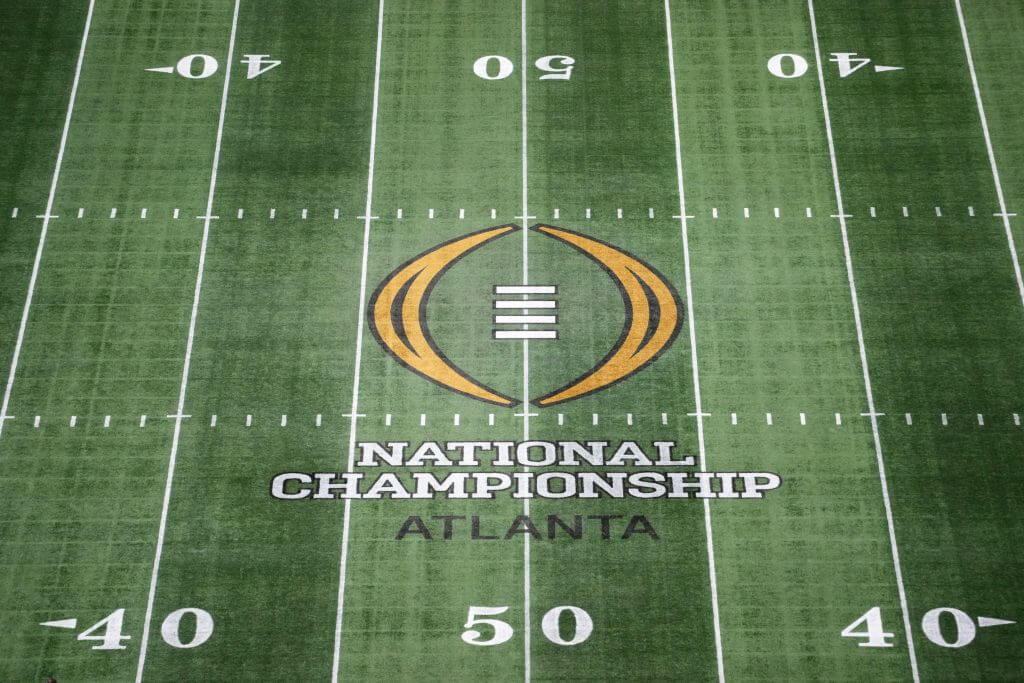


The closest Bryan Seeley has been to working in college sports was spending 40 hours a week covering them for the Daily Princetonian during his days as an undergraduate at the Ivy League school.
Now, the longtime head of investigations for Major League Baseball is about to step into a brand-new role, leading a brand-new organization, which could make him one of the most powerful people in college sports.
Advertisement
On Friday night, Seeley, 46, was named the chief executive officer of the College Sports Commission, the enforcement agency launched by the wealthiest and most powerful conferences to oversee and implement the system that will allow direct payments from NCAA schools to athletes for the first time.
The formal announcement of the CSC and Seeley’s hiring came about two hours after a federal judge approved the $2.8 billion settlement of a trio of antitrust lawsuits facing the NCAA and major college conferences.
A self-described lifelong college sports fan, Seeley brings more than a decade of experience in compliance, enforcement, investigations and policy-making at MLB, along with eight years with the U.S. Department of Justice and a law degree from Harvard.
He said he was drawn to the job by the opportunity to shepherd college sports through a period of transition and into a new era.
“I view this as an area where I can really add value,” Seeley told The Athletic on Sunday in his first interview since a press release announced his hiring.
College sports has a long history of inconsistent enforcement and skirting rules to gain a competitive advantage. The NCAA will still oversee rules related to academics and eligibility, but systems installed to regulate the revenue-sharing cap schools must adhere to, evaluate fair-market value of name, image and likeness deals between athletes and third parties and monitor roster limits will be under the purview of Seeley and the CSC.
He will report to a board made up of the power conference commissioners.
“I think this is a good, new starting point. So whatever existed beforehand does not need to be what exists going forward,” Seeley said. “Culture doesn’t change overnight. I don’t expect that to happen overnight, but I do think that the schools that have signed on to the settlement want rules and want rules to be enforced. Otherwise they wouldn’t have signed on to the settlement. I think student-athletes want a different system. So I think there is a desire for rules enforcement. There’s a desire for transparency.”
Advertisement
Seeley doesn’t have an official start date, but there is no time to waste. Universities can begin directly sharing revenue with college athletes starting July 1. The clearinghouse for evaluating third-party NIL deals for athletes worth at least $600, run by accounting firm Deloitte, goes live Wednesday.
Schools in power conferences are expected to sign formal agreements to abide by rulings made by Seeley and outside arbitrators.
“I haven’t been given assurances of anything, but I do know from my read on this, there is buy-in from the institutions,” Seeley said.
Seeley built the investigations unit at MLB, staffed with lawyers and former law enforcement officers.
“During his time at MLB, Bryan demonstrated unparalleled integrity, a commitment to fairness, and the ability to navigate complex challenges with precision and care,” Major League Baseball commissioner Rob Manfred said in a statement. “I have no doubt he will bring the same level of excellence to the College Sports Commission. College sports will greatly benefit from Bryan’s expertise and vision.”
Seeley’s first task at CSC is to again build a staff.
“These are going to be more private-sector investigations, right?” Seeley said. “We don’t have subpoena power. We don’t have search-warrant power. I’ve operated in that system for over a decade, so I’m well-suited to continue to do that with college sports.”
He added, “I think I’m one of the few people in the country who’s probably led investigations into salary-cap circumvention, and so in terms of the subject matter, at least for part of this, I have a lot of experience.”
MLB teams do not operate under a hard salary cap, but there is one for the league’s international amateur talent acquisition system.
One of the most prominent cases Seeley investigated came in 2017, when the Atlanta Braves were found to have circumvented international amateur signing rules over a three-year period. Braves general manager John Coppolella received a five-year ban for his role in the violations. In a separate investigation, Seeley’s group found the Boston Red Sox had also cheated in the international amateur market. Punishment in that case was handed down in 2016.
Advertisement
While the highest levels of college sports are becoming more similar to professional sports, Seeley pushed back on the notion that the power conferences are trying to create another pro league.
“College sports is its own unique thing, and what makes college sports great needs to remain,” Seeley said. “Some of the system we’re going to bring for enforcement is a system that has been used in the pro sports world, but it’s been used in other worlds, too. … But I don’t view this as the professionalization of college sports. Working with schools and working with student-athletes is going to be quite different than working with professional sports teams and professional athletes.”
— The Athletic’s Evan Drellich contributed reporting.
(Photo: Phil Didion / Imagn Images)
NIL
Men's college basketball transfer class rankings for 2025
Jeff BorzelloJun 9, 2025, 09:00 AM ET Close Basketball recruiting insider. Joined ESPN in 2014. Graduate of University of Delaware. Open Extended Reactions Class rankings in college basketball have long been reserved for high school recruiting, where we compare each program’s group of incoming college freshmen. But with the increased focus on the transfer portal […]


Class rankings in college basketball have long been reserved for high school recruiting, where we compare each program’s group of incoming college freshmen. But with the increased focus on the transfer portal and the majority of high-major programs opting for the older players over high school seniors, we’ve added transfer class rankings to the offseason rotation.
In certain ways, doing these is more difficult than for recruiting classes. First-year coaches are bringing in eight to 10 transfers. Other programs might need only one or two players to round out the roster. Some were looking for depth, some for high-end talent. Some were going for one-year players with experience, others are looking for younger players with room to grow.
Nevertheless, we’re giving it a go, with a Rick Pitino vs. Kentucky battle for No. 1 to kick off this first edition.

![]()
Bryce Hopkins (17.0 PPG at Providence)
Oziyah Sellers (13.7 PPG at Stanford)
Joson Sanon (11.9 PPG at Arizona State)
Ian Jackson (11.9 PPG at North Carolina)
Dylan Darling (19.8 PPG at Idaho State)
Dillon Mitchell (9.9 PPG at Cincinnati)
Handje Tamba (10.5 PPG at Milligan – NAIA)
St. John’s narrowly got the top spot. The Red Storm had huge success last season leaning on a talented perimeter group built from the transfer portal, and they’re hoping to do the same in 2025-26. Rick Pitino landed five top-100 transfers, led by former first-team All-Big East selection Hopkins and former top-25 recruits Jackson and Sanon. Sellers adds shooting, and Mitchell brings an intriguing amount of versatility. Jackson and Sanon are not natural point guards, so Darling provides insurance at that position.
1:56
Ian Jackson’s best plays of the season
Take a look at Ian Jackson’s top moments with UNC this past season after news of his transfer to St. John’s.
![]()
Jayden Quaintance (9.4 PPG at Arizona State)
Jaland Lowe (16.8 PPG at Pitt)
Denzel Aberdeen (7.7 PPG at Florida)
Kam Williams (9.3 PPG at Tulane)
Mouhamed Dioubate (7.2 PPG at Alabama)
Reece Potter (6.5 PPG at Miami (OH))
Mark Pope also landed five top-100 transfers, and if it were guaranteed that Quaintance would be healthy for the start of the season, the Wildcats might have the top spot. They’re also relying more on leaps from rising sophomores and steps forward from last season’s rotation players. But this group has the right mix of talent and proven production, and Pope will likely start up to four of the transfers. The key to the season could be Quaintance, who could miss time after suffering a torn ACL in late February.
![]()
Yaxel Lendeborg (17.7 PPG at UAB)
Elliot Cadeau (9.4 PPG at North Carolina)
Morez Johnson Jr. (7.0 PPG at Illinois)
Aday Mara (6.4 PPG at UCLA)
Dusty May had Danny Wolf, one of last season’s most impactful transfers, and he should have one again in Lendeborg, who withdrew from the NBA draft at the deadline despite being a projected first-round pick. He’s likely to be one of three transfer starters for the Wolverines, who are bringing in four players ranked in the top 51 of ESPN’s top 100 transfers. Johnson and Mara are poised for breakout seasons, while Cadeau holds the keys to Michigan’s 2025-26 season.
Editor’s Picks2 Related![]() Ryan Conwell (16.5 PPG at Xavier)
Ryan Conwell (16.5 PPG at Xavier)
Adrian Wooley (18.8 PPG at Kennesaw State)
Isaac McKneely (14.4 PPG at Virginia)
Pat Kelsey’s incoming transfer class isn’t as deep as some of the other teams on this list, but all three are from the top 35 — and all bring much-needed perimeter shotmaking ability. Conwell was a third-team All-Big East pick who shot better than 41% from 3; Wooley was first-team All-Conference USA and shot 42.2% from 3; and McKneely was one of the best shooters in the ACC last season, knocking down better than 42% from deep. Two of the three will likely start alongside freshman Mikel Brown in an elite backcourt.
![]()
Xaivian Lee (16.9 PPG at Princeton)
Boogie Fland (13.5 PPG at Arkansas)
AJ Brown (13.2 PPG at Ohio)
Two of Florida’s incoming transfers are ranked among the top 30 and should comprise one of the most effective playmaking backcourts in the country. Lee was first to commit to the Gators; he’s a two-time, first-team All-Ivy League selection, thanks to stuffing the stat sheets at Princeton. Fland’s decision vaulted Florida into these class rankings — and near the top of the Way-Too-Early top 25. He’s a former five-star prospect and was one of the best freshmen in the country before suffering an injury in January.
1:58
Xaivian Lee’s top plays of the 2024-25 season
Check out Xaivian Lee’s top plays of the 2024-25 season as the Princeton standout transfers to the University of Florida.
![]()
Wesley Yates III (14.1 PPG at USC)
Desmond Claude (15.8 PPG at USC)
Quimari Peterson (19.5 PPG at East Tennessee State)
Jacob Ognacevic (20.0 PPG at Lipscomb)
Lathan Sommerville (8.2 PPG at Rutgers)
Bryson Tucker (5.4 PPG at Indiana)
Christian Nitu (1.9 PPG at Florida State)
Mady Traore (juco)
After finishing at the bottom of the Big Ten in Danny Sprinkle’s first season at the helm, Washington needed to upgrade its roster. The Huskies should have one of the most talented perimeter trios in the conference with former USC guards Wesley Yates III and Desmond Claude to go along with SoCon Player of the Year Quimari Peterson from East Tennessee State. Yates and Peterson are knockdown shooters, while Claude gets to the rim. Jacob Ognacevic was the Atlantic Sun Player of the Year and shot better than 40% from 3. Rising sophomores Lathan Sommerville and Bryson Tucker are upside plays.
![]()
Lamar Wilkerson (20.5 PPG at Sam Houston)
Reed Bailey (18.8 PPG at Davidson)
Nick Dorn (15.2 PPG at Elon)
Tucker DeVries (14.9 PPG at West Virginia)
Jasai Miles (15.4 PPG at North Florida)
Tayton Conerway (14.2 PPG at Troy)
Josh Harris (13.4 PPG at North Florida)
Jason Drake (11.1 PPG at Drexel)
Conor Enright (7.5 PPG at DePaul)
Sam Alexis (4.7 PPG at Florida)
For a second consecutive season, Darian DeVries is overseeing a complete overhaul at a new job. Except for a couple of returnees hoping for waivers to play another season and freshman Trent Sisley, the rest of the roster consists of the above names. There are eight double-figure scorers in Indiana’s group of incoming transfers, including a trio in the top 50: DeVries, Wilkerson and Bailey. Indiana focused on perimeter shooting in the portal, a stark contrast to recent years in Bloomington, but the Hoosiers hope their new point guards, Conerway and Enright, will lead the way.
2025 NBA draft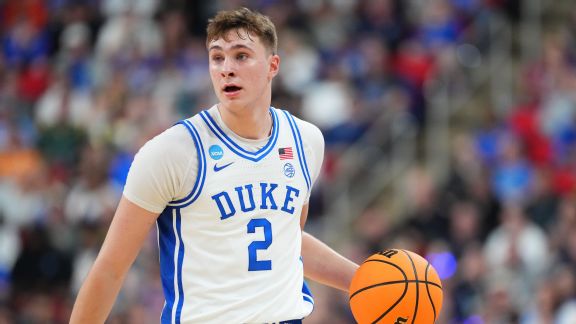 • NBA comps for 14 players: Flagg to Tatum?
• NBA comps for 14 players: Flagg to Tatum?
• We offer potential trades for Mavs, Flagg
• Updated top 100 big board rankings
• Mock draft! 76ers’ pick at No. 3?
• Stacking all 30 teams’ draft assets | More
![]()
Xzayvier Brown (17.6 PPG at Saint Joseph’s)
Tae Davis (15.1 PPG at Notre Dame)
Derrion Reid (6.0 PPG at Alabama)
Nijel Pack (13.9 PPG at Miami)
This is a pivotal season for Porter Moser, and he accordingly recruited four top-60 transfers — three having high-major experience and three having played at least two seasons. All four should start from Day 1, too. Pack has started 121 college games and brings Final Four experience to the Sooners, while Davis took a big jump last season. Reid is a former five-star recruit with first-round talent, while Brown might make the biggest impact of the quartet. A bona fide post player would have helped Oklahoma, but this is a great core.
![]()
Jordan Marsh (18.8 PPG at UNC Asheville)
Rodney Rice (13.8 PPG at Maryland)
Ezra Ausar (12.5 PPG at Utah)
Chad Baker-Mazara (12.3 PPG at Auburn)
Amarion Dickerson (13.2 PPG at Robert Morris)
Jacob Cofie (7.2 PPG at Virginia)
Jaden Brownell (14.0 PPG at Samford)
Gabe Dynes (6.8 PPG at Youngstown State)
Ryan Cornish (17.1 PPG at Dartmouth)
Eric Musselman was on the ground floor of the transfer movement, building his rosters in this fashion even before the portal existed. The result is another deep group for his second season in Los Angeles, highlighted by perimeter players Rice and Baker-Mazara. The former was one of the best offensive players in the Big Ten late last season, averaging 18.8 points and 45.1% from 3 during an eight-game stretch in January and February. The latter brings two-way ability and Final Four experience. Cofie, Ausar and Dickerson are all impact players up front.
0:43
Raise the roof! Baker-Mazara slams home a big-time and-1 for Auburn
The crowd erupts as Chad Baker-Mazara slams home the and-1 to pad the Tigers’ lead late in the second half.
![]()
Bennett Stirtz (19.2 PPG at Drake)
Alvaro Folgueiras (13.8 PPG at Robert Morris)
Brendan Hausen (10.9 PPG at Kansas State)
Tavion Banks (10.1 PPG at Drake)
Ashton Williamson (7.3 PPG at FIU)
Cam Manyawu (7.1 PPG at Drake)
Isaia Howard (4.5 PPG at Drake)
Kael Combs (3.8 PPG at Drake)
Joey Matteoni (redshirt at Drake)
First-year coach Ben McCollum brought several players from the team he guided to the second round of the 2025 NCAA tournament with him to Iowa. The key man for him is Stirtz, a potential All-American and one of the premier players in the portal. Folgueiras was the Horizon League Player of the Year and is highly skilled up front, while Hausen should fit perfectly in McCollum’s offense as a knockdown 3-point shooter: He shot 39% from 3 over three seasons at the high-major level.
![]()
Blake Harper (19.5 PPG at Howard)
Nik Graves (17.5 PPG at Charlotte)
Owen Freeman (16.7 PPG at Iowa)
Josh Dix (14.4 PPG at Iowa)
Liam McChesney (6.5 PPG at Illinois State in 2022-23)
Austin Swartz (5.9 PPG at Miami)
With program stalwarts Ryan Kalkbrenner and Steven Ashworth, among others, gone after last season, Creighton needed to reload quickly. It didn’t replace its departing stars, but it grabbed top talent. Freeman was one of the best big men in the portal and a capable shot blocker, while Harper and Graves are talented scorers with playmaking promise. Throw in sharpshooter Dix, and Greg McDermott should have one of the best offenses in the Big East. There could be questions defensively, however.
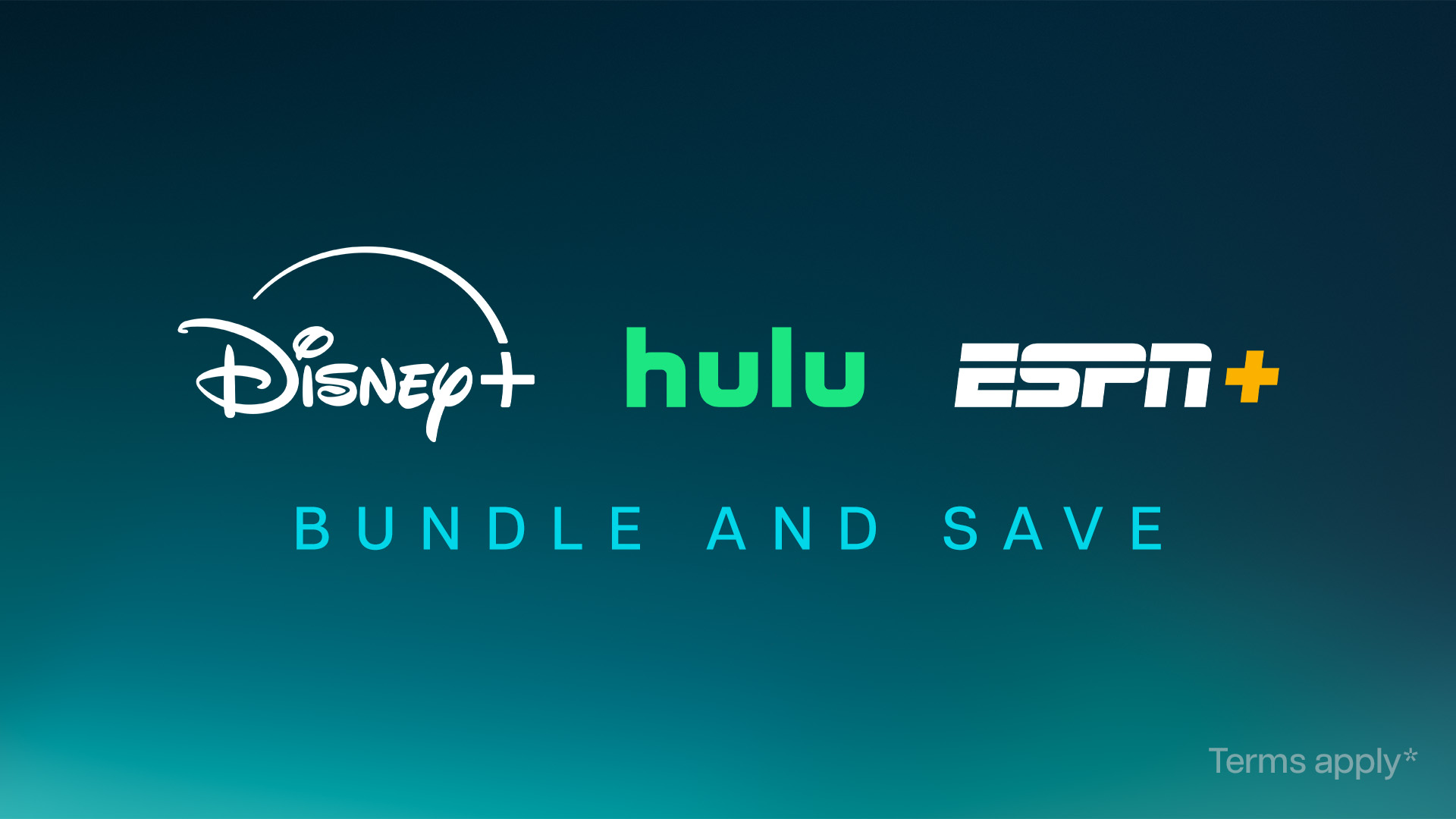
With iconic stories, hit Originals and live sports, there’s something for everyone on Disney+, Hulu and ESPN+. Get all three for a price you’ll love.
![]()
Keyshawn Hall (18.8 PPG at UCF)
KeShawn Murphy (11.7 PPG at Mississippi State)
Kevin Overton (7.8 PPG at Texas Tech)
Elyjah Freeman (19.3 PPG at Lincoln Memorial – D-II)
Abdul Bashir (juco)
Emeka Opurum (juco)
Last season’s Final Four Tigers relied heavily on transfers, and Bruce Pearl is hoping to replicate some of that portal magic. He landed three top-60 transfers, including Hall, a talented scorer, and Murphy, a proven SEC big man. The intriguing addition is Division II transfer Freeman, a terrific offensive player who brings size and versatility to the wing. We’ll be watching how his production translates to the SEC. Overton could force his way into a starting job, too.
![]()
Darrion Williams (15.1 PPG at Texas Tech)
Tre Holloman (9.1 PPG at Michigan State)
Ven-Allen Lubin (8.7 PPG at North Carolina)
Terrance Arceneaux (6.5 PPG at Houston)
Jerry Deng (7.0 PPG at Florida State)
Quadir Copeland (9.2 PPG at McNeese)
Alyn Breed (17.5 PPG in two games at McNeese)
Colt Langdon (redshirt at Butler)
It was clear NC State would take big swings in the transfer portal under new coach Will Wade, and though it took until late May, the Wolfpack came away with one of the best transfers in the country in Williams. He’s versatile, he’s a mismatch for most opponents and he gives Wade a go-to guy for his first season in Raleigh. Wade surrounded his star player with proven high-major talent, including NCAA tournament starters Holloman and Lubin. Arceneaux has a tantalizing ceiling on the offensive end. Two players from Wade’s McNeese roster have also come along.
NIL
Former Terps star guard to take Maryland-partnered NIL collective to court
MARYLAND (WBFF) — Months later and with their replacements hired, Maryland athletics is still dealing with the fallout of former men’s basketball coach Kevin Willard’s and former athletic director Damon Evans’ abrupt exits. Ja’Kobi Gillespie, a former men’s basketball standout guard who transferred to Tennessee in April, is taking Blueprint Sports, a name, image and […]
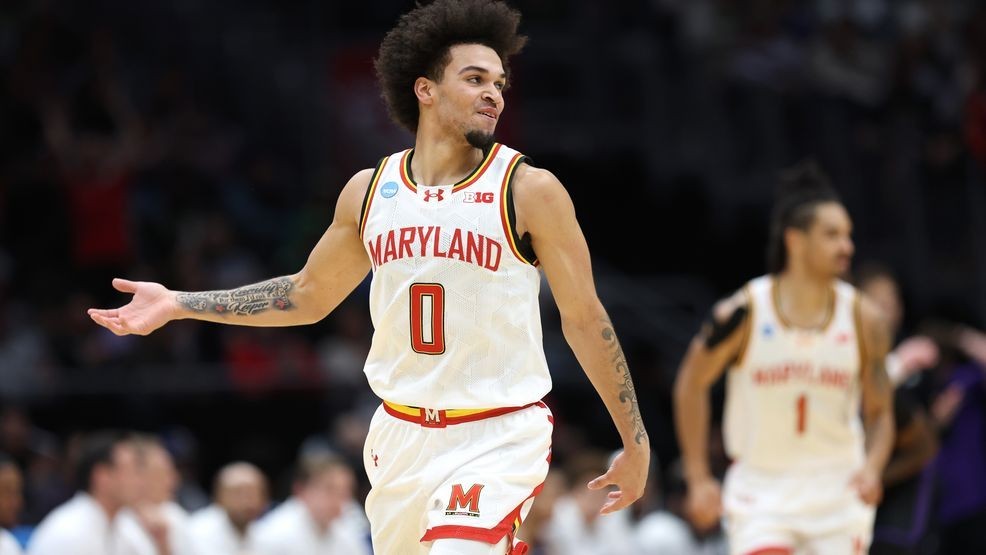
MARYLAND (WBFF) — Months later and with their replacements hired, Maryland athletics is still dealing with the fallout of former men’s basketball coach Kevin Willard’s and former athletic director Damon Evans’ abrupt exits.
Ja’Kobi Gillespie, a former men’s basketball standout guard who transferred to Tennessee in April, is taking Blueprint Sports, a name, image and likeness collective that Maryland partners with, to mediation court this month over an unpaid contract, Gillespie’s lawyer, Issac Connor, and father, Byron Gillespie, told The Baltimore Sun.
Blueprint, which says on its website it works with more than 70 college athletic departments, has partnered with Maryland since 2023. The school announced a “multiyear partnership extension” with the collective last month.
Connor and Byron Gillespie told The Sun that Blueprint is refusing to honor Ja’Kobi Gillespie’s NIL contract that he signed with the collective before last season. They said the contract did not have a clause that terminated the agreement if he entered the transfer portal, which he did days after Willard left to become the coach at Villanova on March 30.
Read the full story on the Baltimore Sun.
NIL
Dooley’s Back Nine: Florida Football’s Big Get On Recruiting Trail
The Back Nine comes at you after a weekend of decadence that didn’t include much time in the Midday Sun. Only mad dogs and Englishmen, you know. 10. So, the biggest story of the last week is one that I’d like to explain to you. But I really can’t. I spent a good hour […]

The Back Nine comes at you after a weekend of decadence that didn’t include much time in the Midday Sun. Only mad dogs and Englishmen, you know.

10. So, the biggest story of the last week is one that I’d like to explain to you. But I really can’t. I spent a good hour reading all of the implications of the House Settlement, which is the main reason Florida’s NIL budget doubled for this season (as did most schools not named Ohio State). It was so convoluted and there are going to be so many lawsuits to follow, I got a headache and started to smell toast burning. All I know for sure is that it’s a good time to be a college football player. They need to be buying ME lunch.
11. Meanwhile, coach Billy Napier continues to do well in recruiting. Wide receiver Justin Williams from Buchholz was a big get and the momentum continues to move in the right direction. You have to go back and realize what he inherited in terms of structure (like the head coach leaving his phone with a staffer to text with recruits because he couldn’t be bothered). I have no real idea where this season is going to go, but I do know that if it goes south the next coach is going to inherit an amazing infrastructure. Hopefully, Napier will be around for it.
12. I thought I would abandon college baseball after the Gators were unceremoniously dumped from the tournament, but I was all in for the Supers. Sunday had to be one of the greatest negative rooting days in a long time as FSU, Miami and Tennessee were all eliminated. All we have left to root against is LSU. Dang, the Tigers are going to take over Omaha again, although I would think Arkansas will travel like crazy. I’m going to go ahead and pick the Hoggies to win the whole thing.
13. At least the SEC got two teams in after a record 13 teams started this thing. The ACC was all braggy when Super Regionals began, but it needs Duke to win tonight or only one team will make it. And that team beat another ACC team to get to Omaha. If Murray State wins tonight, there will be seven conferences vying for the title of most weak $5 shots consumed at Rocco’s. Hey, my money is on Louisville.
14. Which takes me back to the Women’s College World Series and a sobering stat. With Teas winning, the SEC has now won five national titles this academic year, with baseball and track still to come. Of the five, three have been won by Texas or Oklahoma. I told everybody that the impact of those programs would be felt more in the spring than the fall.
15. Time to pick the winner of the U.S. Open and anyone who reads The Back Nine knows I have been pretty good with the majors. Rory McIlroy missed the cut by 12 strokes last week so I’m staying away from him, and I don’t want to pick the No. 1 player in the world again. It’s as boring as watching Scottie Scheffler play. I’m going to pick Ludvig Aberg because I think his time has come.
16. I did want to address what Jack Nicklaus said after Scottie won the Memorial, about how Scheffler is in a league of his own in part because so many great players are on the LIV Tour. I would take it further to say that those LIV stars are not sharpening their games on that Tour. That’s my take and I’m sticking to it. I just know we need to get Mom and Dad back together.
17. I wish I had thought of this line first and maybe Adam Schefter stole it, but when he said that there is white smoke coming from the chimney because Aaron Rodgers finally said yes (when is the gender reveal?) I laughed out loud. It’s a real dilemma though because I like the Steelers but not Rodgers. I have my reasons. Amazingly, the Sports Books didn’t move much with this news. Maybe the bettors have no confidence in a 41-year-old quarterback.
18. Now that baseball is over, I have Jeff back in the studio onThe Tailgate and as good as that is, I wish the Gators’ season was not over. Anyway, the latest playlist:
WRUF.com sports columnist Pat Dooley can be heard on “The Tailgate” along with Jeff Cardozo from 4-6 p.m. Monday-Friday on 98.1-FM/AM-850 WRUF.
NIL
Mississippi State Bulldogs ready for revenue sharing era of college sports
A seismic shift is on the way for college athletics, as long-awaited news is now official. The House v. NCAA settlement has been approved, and now for the first time ever, revenue sharing will be introduced to college sports. Starting July 1, universities are permitted to directly share up to $20.5 million with student athletes […]

A seismic shift is on the way for college athletics, as long-awaited news is now official. The House v. NCAA settlement has been approved, and now for the first time ever, revenue sharing will be introduced to college sports. Starting July 1, universities are permitted to directly share up to $20.5 million with student athletes across all sports.
NEW: Judge Claudia Wilken has approved the landmark House v. NCAA settlement, which will usher in revenue sharing and roster limits to college sports.https://t.co/UQdwaVC8ji pic.twitter.com/LDVJl4bwgb
— On3 (@On3sports) June 7, 2025
Though revenue sharing isn’t technically a requirement and schools that do participate could chose to share less than $20.5 million, you can expect every serious college athletics department to be sharing that full amount. And while there are no requirements to how that revenue is distributed, you can expect football to see the overwhelming majority of that funding followed by men’s basketball.
Also new with the settlement is greater restrictions on NIL deals, as moving forward, any third-party NIL deals valuing at least $600 must be approved by a newly formed clearinghouse called “NIL Go.” Simply put, measures are being enacted to assure schools don’t simply use their NIL collectives as a means to get past the $20.5 million revenue sharing cap. Furthermore, new roster limits will be put in place for sports, and now schools are permitted to fully fund scholarships for each player on the roster.
So what does this mean for Mississippi State?
Mississippi State Bulldogs ready to move forward into revenue sharing era
While the news of revenue sharing is just now official, Mississippi State has been preparing for it for quite some time. Last fall, MSU unveiled the “State Excellence Fund,” which is committed to providing resources and benefits to student athletes on campus. The “State Excellence Fund’s” founding was MSU laying the groundwork for revenue sharing with student athletes once that ruling passed.
The time has now come for that, and according to athletic director Zac Selmon, the “news allows us to move ahead in our pursuit of new heights.”
— Zac Selmon (@zacselmon) June 7, 2025
Though nothing is specified, Selmon’s statement implies is that Mississippi State is fully-embracing revenue sharing going forward. Given the recent fundraising we’ve seen under Zac Selmon, it’s fair to expect State to share the full $20.5 million allotment with student athletes. Like every major athletics program, football and men’s basketball are going to see the bulk of that.
But MSU will likely dole out more for baseball than the majority of athletic departments. The school’s investment into baseball was key towards attracting a coach the caliber of Brian O’Connor. State is going to spend at a high level when it comes to the Diamond Dawg program, and making sure they’re allocating enough to build and maintain an elite roster is a high priority moving forward. Add in that State will likely be fully funding scholarships in baseball, and you see how these changes could be a major benefit to Bulldog baseball.
-

 College Sports3 weeks ago
College Sports3 weeks agoPortal Update – Basketball and Gymnastics Take Hits
-

 Professional Sports3 weeks ago
Professional Sports3 weeks agoJon Jones answers UFC retirement speculation as fans accuse champion of 'holding the belt …
-

 Youtube3 weeks ago
Youtube3 weeks agoXavier Legette taught Marty Smith his signature celly
-

 Motorsports3 weeks ago
Motorsports3 weeks agoWhy IHOP Rode With Dale Earnhardt Jr. In Amazon NASCAR Debut
-

 NIL2 weeks ago
NIL2 weeks ago2025 NCAA Softball Tournament Bracket: Women’s College World Series bracket, schedule set
-

 College Sports3 weeks ago
College Sports3 weeks agoNCDC Commitment Profiles: Cyclones’ Martins Moving On to Saint Anselm College • USPHL
-

 High School Sports3 weeks ago
High School Sports3 weeks agoToday in the MHSAA
-

 Health4 days ago
Health4 days agoOregon track star wages legal battle against trans athlete policy after medal ceremony protest
-

 College Sports1 week ago
College Sports1 week agoIU basketball recruiting
-

 Professional Sports4 days ago
Professional Sports4 days ago'I asked Anderson privately'… UFC legend retells secret sparring session between Jon Jones …

















 Stephen A. Smith and John Starks react to Knicks win | SportsCenter
Stephen A. Smith and John Starks react to Knicks win | SportsCenter






 STEPHEN A. CALLS OUT LEBRON for Giannis and NBA eras comments
STEPHEN A. CALLS OUT LEBRON for Giannis and NBA eras comments  | First Take
| First Take







